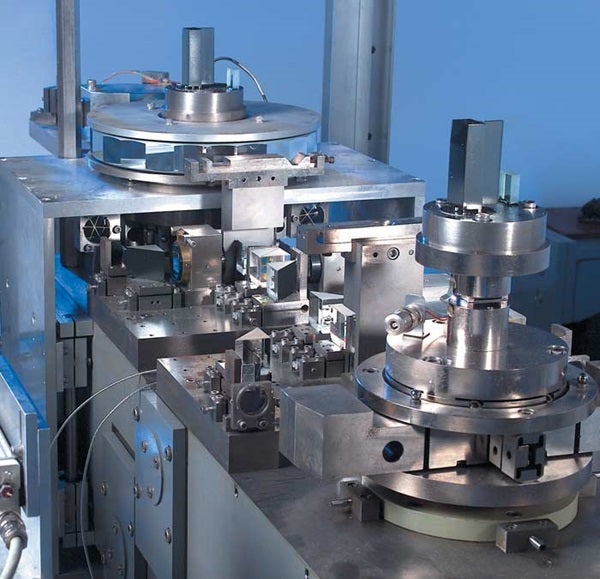Scientists at the National Institute for Standards and Technology (NIST) and the Massachusetts Institute for Technology (MIT) proved Einstein’s famous equation, E=mc2, is correct to 0.0000004 percent. The scientists’ direct evaluation was 55 times more precise than previous tests.
In Einstein’s equation, energy (E) is equal to mass (m) times the speed of light (c) squared. Because the speed of light is constant, scientists needed to make precise measurements of energy and mass to confirm the equation.
Because the wavelength of electromagnetic radiation corresponds to a specific energy, NIST scientists measured the wavelength of gamma rays emitted by silicon and sulfur atoms to find E. As a nucleus captures a neutron, the nucleus releases gamma rays. Nearly perfect crystals were placed next to the gamma-ray source sources, so as each gamma ray passed through the crystals, its path was deflected. The NIST team then measured the tiny angles of the bend — on the order of 0.1 degree — and inferred the gamma ray’s wavelength.
The MIT team measured the mass of the nucleus before and after it emitted a gamma ray. Unfortunately, scientists can’t put the nucleus on a scale to measure such a small mass difference. Instead, they put two atoms (one with an extra neutron, one without) in an electromagnetic “trap” and let them circle. By measuring how many revolutions each atom made, scientists could infer their masses, and find the difference between the two.
When comparing data, the NIST/MIT collaboration experimentally confirmed Einstein’s equation is correct. Their results appear in the December 22, 2005, issue of Nature.










